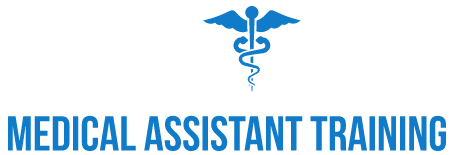Different Medical Assistant Course Outlines
In USA several Universities, institutes and colleges educate more students to develop into successful medical assistants. Medical assisting programs attributes practical training that is offered by experienced tutors who possess “real-world” knowledge and skills. Most medical assisting programs can be finished within eight to ten month period. You can also get comfortable scheduling choices. Generally, medical assistants will be trained equally in clinical and administrative expertise so as to work proficiently in a health care service center. Medical assistance program offerers training in laboratory procedures, pharmacology, health science, patient treatment etc. So, all medical assistants are skilled to work in an assorted range of positions in the health care industry.
Following are the main basic course outlines, offered by various medical assistance training programs:
1. Introduction to Medical Assistance
This preliminary lessons in the training offer a general idea to the students about the medical assisting occupation, medical terms and expressions, soft skills, learning methods and fundamental clinical proficiency. In this introductory lesson, students learn about:
- Medical terms that are linked to the human body makeup and directional terms.
- The major rules required to construct, spell and articulate the vital medical terms together with the fundamental suffixes, prefixes, merging forms and sources of the words.
- Clerical and medical tasks that are executed by the medical assistants.
- The proficient traits and personal look’s that is essential for the medical assistants.
- The importance of interpersonal skills and the ways to apply these skills while working with the patients and colleagues.
- Fundamental medical indemnity billing and coding, coding notions plus the usage of coding allusion manuscripts.
- Official recognition and qualifications needed for the medical assistants.
- Students are trained to ‘test-attending’ tactics, in addition to the strategies that may be utilized for decreasing the anxiety that may be encountered during the test process.
In addition, students may also gain knowledge and apply the crucial medical skills for instance, how to take essential signs of the patients, draw blood and process their blood tests, prepare and administer injections to the patients. Some procedures will persist to follow all through the whole course. Basically, students who attend this medical assistant lessons expend (just about) ½ of their learning in a conventional lecture hallway and ½ of their time in a contemporary clinical lab environment.
2. Administrative or Office Assistant Course
This class focuses on the progress of students’ communication skills. Students will become skilled at:
- Writing a professional business note.
- Developing precision and rapidity in computer’s keyboard.
- Understanding the fundamentals of Medical transcription.
3. Clinical Assistant Course
This part of the training program in medical assisting envelops physical assessments and other procedures that are connected to the nervous system and ear and eye areas. In this class, students learn about:
- Ways to work and evaluate the patient graphic representations.
- Ways to carry out different front-office tasks, such as, managing the patient records, scheduling the appointments office accounting.
- Communication skills – both oral and non-verbal that are vital for interacting with several patients face-to-face and on the phone.
- Fundamental concepts in physiology and anatomy of the unique areas of the body such as, ears and eyes and integumental parts of the body.
- Widespread diseases, chaos and therapeutic terms that are associated with the nervous, sensory and integumental parts of the body.
4. Laboratory Assistant Course
In these classes, students learn about the blood, urine, immune and lymphatic systems along with the medical laboratory procedures. This intention of this course is to expose the students to subjects such as, microbiology and essential medical lab procedures that are generally performed in doctor’s offices and health check clinics. In this class, students learn about:
- Recognition of specimen, compilation, management and shipping procedures.
- Regular analytical hematology and venipuncture.
- Preservation and caring of medical tools, equipment and provisions in the medical laboratory.
- Nuclear medications, radiology in addition to a range of radiological assessment. Students also learn how to prepare the patients for such examinations.
- Composition and anatomy of the human urinary track.
- Immune system of the human body.
- Common analytical examinations and chaos associated with the blood, urine immune and lymphatic systems.
In this course, students expend their time in a customary classroom background in addition to the institution’s computer and medical laboratory’s.
